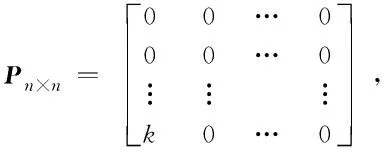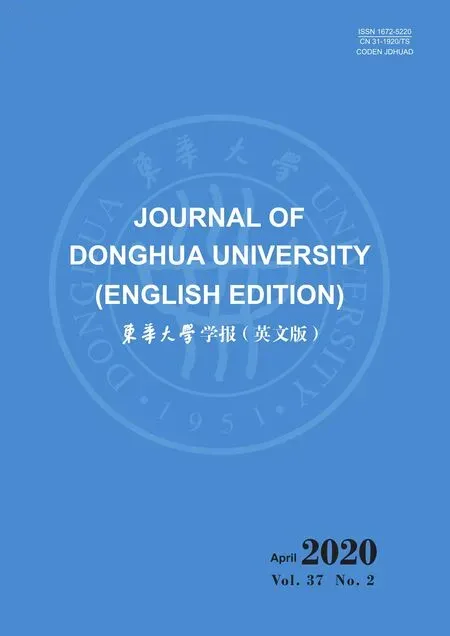Optimal Control Designs for a Class of Nonviscously Damped Systems
XIU Guozhong (修国众), SHI Bao (时 宝), QIAN Feng (钱 峰)
1 School of Basic Science for Aviation, Naval Aviation University, Yantai 264001, China 2 School of Aviation Operations and Support, Naval Aviation University, Yantai 264001, China
Abstract: A scheme for optimal control problem formulation of a class of nonviscously damped system using pseudo-state-space formulation is presented in this paper. Taking the exponentially damped system of nonviscously damped system as an example, a new state space representation is applied to the n-order exponentially damped system. The necessary conditions for the optimality of the exponentially damped system are obtained. A numerical example of a single degree of freedom exponentially damped system is considered to illustrate the methodology and technique.
Key words: nonviscously damped system; state space formulation; exponentially damped system; optimal control problem
Introduction
Viscous damping is the most common model for the modelling of vibration damping. Viscous damping models are used widely for their simplicity and mathematical convenience even though the true damping behaviour is expected to be nonviscous. Damping models in which the dissipative forces depend on any quantity other than the instantaneous generalized velocities will be called nonviscous damping models. Among many nonviscous damping models, the convolution integral model is possibly the most general model within the scope of linear analysis[1].
The convolution integral models are derived based on the material properties of stress relaxation and creep applying Boltzmann’s superposition principle. The convolution integral models are superior to the differential ones in many aspects: (1) the fading memory property can be characterized and the time history of loading acting on materials can be recorded; (2) the stress relaxation functions or creep functions are easily and directly obtained via experiment data fitting; (3) other factors such as temperature and the ageing affects can be conveniently considered and included in the model. The presence of the “integral” term makes the vibration analysis and control design more complicated than the classical ones. The integral type damping models may be also called nonviscously damping models and the corresponding oscillators are called nonviscously damped oscillators.
A brief review of literature on dynamics of nonviscously damped systems may be found in Refs. [2-3]. Lietal.[4]considered this kind of system where the exponential kernel function is associated with the stiffness matrix. Adhikari[5]proposed an exact state-space method for the analysis of linear systems with exponential damping. Li and Hu[6]presented an idea to describe multiple damping models by considering a fraction formula of rational polynomials (called the general damping model), which is attempting to express different damping models by a uniform damping form. Yun and Youn[7]presented a design sensitivity analysis for the transient response of the non-viscously damped dynamic systems. The transient response is calculated with the implicit Newmark time integration scheme. The design sensitivity analysis method of the history dependent system is developed using the adjoint variable method. The discretize-then-differentiate approach is adopted for deriving discrete adjoint equations. Dingetal.[8]showed three new kinds of time-domain numerical methods of exponentially damped systems, namely, the simplified Newmark integration method, the precise integration method, and the simplified complex mode superposition method. Based on a symmetric state-space equation and the complex mode superposition method, a delicate and simplified general solution of exponentially damped linear systems, completely in real-value form, is developed. Researchers[9-11]presented a method to calculate the derivatives of the eigenvalues and eigenvectors of multiple degree of freedom damped linear dynamic systems with respect to arbitrary design parameters. In a word, more and more scholars pay attention to the nonviscously damped systems.
In recent years, more and more scholars have studied fractional order control methods, such as fractional proportional integral derivative (PID) control[12-13], fractional sliding mode control[14-15], fractional adaptive control[16-17], and fractional optimal control[18-20]. But the control design of exponential damping system is very few.
The purpose of this paper is to design the optimal control method for the nonviscously damped systems. In this paper we consider then-order exponentially damped system. Among many other mathematically possible damping functions, the exponential damping model is the most physically meaningful. In section 1, we present pseudo-state-space formulation, which is very similar to an integer order model. In section 2, we formulate the optimal control problems for a single input system. Dynamic constraint involves exponential damping systems. The necessary conditions for the optimality of the exponentially damped systems are obtained. In section 3, as a numerical example we consider the optimal control problem of a single degree of freedom exponential damping system. The necessary conditions for the optimality of the single degree of freedom exponential damping system are obtained. It is a two-point boundary value problem. We use a set of internal variables for solving the two-point boundary value problem. The proposed method can be applied to the optimality of multiple degree of freedom nonviscously damped systems. Numerical simulations are provided to illustrate the proposed method.
1 Pseudo State Space Representation
The convolution integral relations of viscoelastic materials are represented by the following integro-differential equation of Volterra type:
(1)
whereσ(t)is the stress,ε(t)is the stain, andG(t)is the stress relaxation function. Here, we use a damping model for which the kernel function is exponentially damped model.
(2)
whereμk∈R+is known as the relaxation parameters, andndenotes the number of relaxation parameters used to describe the damping behaviour.Ck∈RN×Nis the damping coefficient matrix. We consider suchn-order exponentially damped system.
(3)
wherenis an integer andc1,c2, …,cmare nonzero real numbers.

(4)
which is equivalent to
(5)
So then-order exponentially damped system can be expressed as the high dimensional state-space equation[21]. Moreover, it can be noted that the representation is very similar to an integer order model.
2 Optimal Control Design of the Exponentially Damped Systems
We now present a formulation for the optimality of a single input exponentially damped systems. Consider the following problem: find the optimal controlu(t) that minimizes the performance index
(6)
subject to the system dynamic constraints
(7)
and the initial condition is thatX(0)=X0,X(tf) is free, andtfis fixed.Qis a weighted matrix related to the state vector, andris the weighted coefficient associated with the control signal. Here,X(t) andu(t) aren-dimensional state vector and a control input respectively.A∈Rn×n, andb∈Rn×1. In addition, we assume the following conditions:
(1)Qn×nis a nonnegative matrix.
(2)r>0.

To obtain the optimality condition for the problem formulated by Eqs. (6)- (7), we follow the traditional approach and define a modified performance index as
(8)
whereλ(t) is the Lagrange multiplier. Taking variation of Eq. (8), we obtain
(9)
The second and the third terms on the right side of the upper formula are calculated separately and the following results are obtained.
Provided thatδX(0)=0 orλ(0)=0, andδX(tf)=0 orλ(tf)=0. AsX(0)=X0is specified,δX(0)=0. And becauseX(tf) is not specified, we requireλ(tf)=0. We can get
(10)
(11)
Substitute the above calculation results into Eq. (9),

(12)
Minimization ofJa(u) (and hence minimization ofJ(u)) requires the coefficients ofδλ,δXandδuin Eq. (12) be zero. This leads to
(13)
(14)
ru+bΤλ=0 ,
(15)
X(0)=X0,λ(tf)=0.
(16)
Equations (13)-(15) are the necessary conditions for the optimality of exponentially damped systems. Equations (13)-(15) with the boundary conditions (16) constitute a boundary value problem of optimal control problems for exponentially damped systems. We can use a direct numerical technique to solve it. Here we only discuss the optimal control problem with one “integral” term in the dynamical constraint. The same method can be used to solve the optimal control problem with multiple “integrals” in the system dynamic constraints. If the single input system is replaced by the multi-input system, this method can also solve the problems.
3 Numerical Example
As a numerical example we consider the optimal control problem of a single degree of freedom oscillator with a viscoelastic damper. The equation of motion of the oscillator can be expressed as
(17)
(18)

Then Eq. (18) is transformed into the following equation in the state space
(19)
For the convenience of the following calculation, we can takem=1,c=1,k=1, and then the equation can be abbreviated to the following form
(20)
Next, we discuss the optimal control problem with exponentially damped terms in system dynamic constraints. The performance index function is expressed as
(21)
subject to the system dynamic constraints
(22)


Optimal conditions for this problem are given by
(23)

(24)

(25)
(26)
Then Eqs. (23)- (26) form a two point boundary value problem. To solve equations, we introduce the internal variablesy1(t) andy2(t) through the following relationship[22]:
(27)

(28)
Applying Leibniz’s rule for differentiation of an integral to Eq. (27), we obtain
(29)
Taking Eq. (29) into Eq. (23), we can get
(30)
Equations (29)- (30) lead to the following equations
(31)
In the same way, we can get
(32)
Taking Eq. (32) into Eq. (24), we can get
(33)
Equations (33)- (34) lead to the following equations
(34)
Note that Eqs. (31) and (34) with the boundary conditions (26) form a two point boundary value problems. We can solve these eight linear equations directly using any linear equation solver. Solving the above equations, we obtain the following results.
The changes of state variables and control variable for different values ofμare shown in Figs. 1- 2. And we can see the second state variable of Fig. 1 changes more than that of Fig. 2. However, the control variable of Fig. 1 changes less than that of Fig. 2.

Fig. 1 Changes of state function and control function for μ=0.2

Fig. 2 Changes of state function and control function for μ=1.0
4 Conclusions
A scheme for the optimal control problem of the nonviscously damped system using pseudo-state-space formulation is presented in this paper. Using the pseudo-state-space model, a new set of optimal conditions is obtained. As a numerical example, a single degree of freedom exponential damping system has been considered. The necessary conditions for the optimality of the exponential damping system involve both left and right integral terms. We introduce the internal variables to extend state-space representation of the exponential damping system. So we can get eight linear equations, and these eight linear equations with the boundary conditions together form a two-point boundary value problem. A direct numerical technique is used to solve the two point boundary value problems. Numerical simulations are provided to illustrate the above control design.
 Journal of Donghua University(English Edition)2020年2期
Journal of Donghua University(English Edition)2020年2期
- Journal of Donghua University(English Edition)的其它文章
- Acoustic Performance of Green Composites for Chinese Traditional Percussion Drums
- Fabrication and Characterization of Polypyrrole/Polyurethane/Polyamide/Polyamide Yarn-Based Strain Sensor
- Friction and Wear Behaviors of C/C-SiC Composites under Water Lubricated Conditions
- Performance Analysis of Cushioned Sport Soles with Plantar Pressure Test
- Existence Criterion of Three-Dimensional Regular Copper-1, 3, 5-Phenyltricarboxylate (Cu-BTC) Microparticles
- Combining User-Driven Social Marketing with System-Driven Personalized Recommendation for Student Finding
